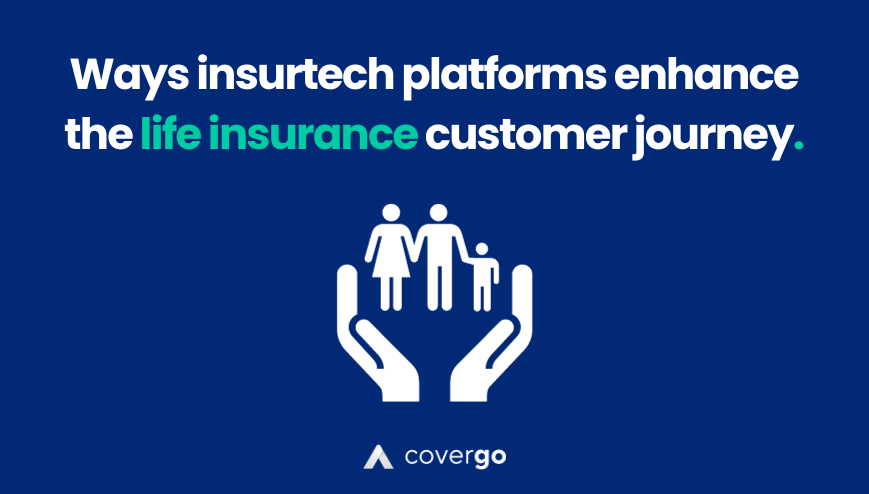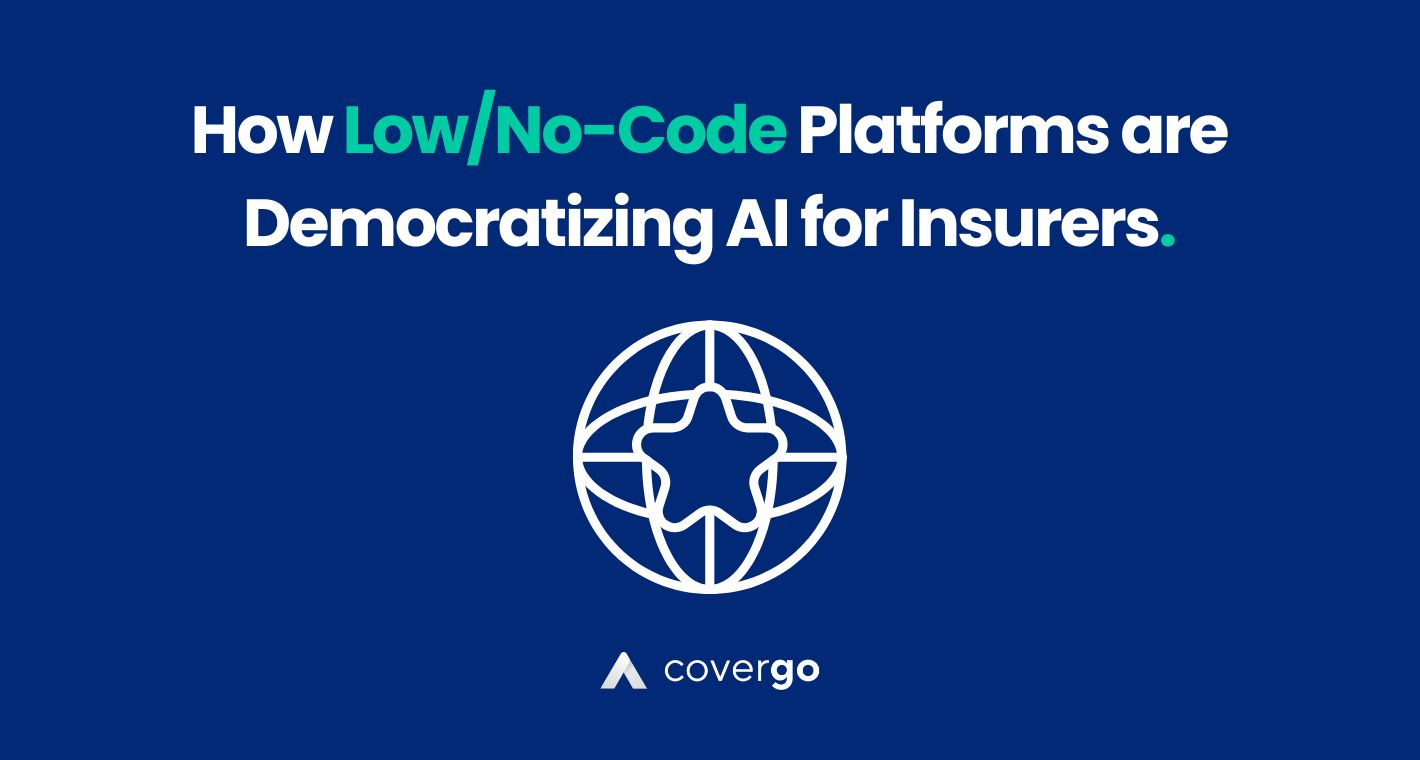Key takeaways:
-
Simplifying the Application Process: Technology has revolutionized the life insurance application process by introducing online applications that streamline the process, providing instant quotes, and utilizing machine learning for more accurate risk assessment, ultimately reducing time and complexity.
-
Personalizing Policies with Data Analytics: Insurers now leverage data analytics to tailor life insurance policies through advanced risk assessment and predictive modeling, ensuring that policies align closely with individual needs and circumstances.
-
Digital Distribution Channels: The advent of digital distribution channels has transformed the way life insurance is purchased, offering convenience, accessibility, and cost savings through online policy browsing, comparison, and transactions, catering to a tech-savvy generation.
-
Streamlining Claims Processing: Insurtech platforms have digitized the claims process, simplifying it with online filing options, AI-driven support for beneficiaries, and real-time visibility into the status of claims, enhancing transparency and efficiency in claim settlements.
In a world driven by technological advancements, almost every aspect of our lives has been touched by digital innovation. Life insurance, an industry often associated with complexity, paperwork, and a slow-moving process, is no exception.
With the integration of cutting-edge technologies and the rise of insurtech companies, the life insurance customer journey has undergone a remarkable transformation.
Today, we’ll explore how these new technologies are redefining the way individuals purchase, manage, and interact with their life insurance policies, making the experience more convenient, personalized, and secure than ever before.
1. Simplifying the Application Process
Traditionally, applying for life insurance has been a paper-intensive, time-consuming task. The stacks of forms and medical examinations were often intimidating. However, the integration of new technologies has dramatically simplified the application process. Here’s how:
Online Application: Potential policyholders can now complete applications online, providing necessary information through a user-friendly interface. This digitalization has streamlined the process, reducing the time it takes to apply for coverage.
Instant Quotes: The era of waiting for weeks to receive a policy quote is over. Today, applicants receive instant quotes, allowing them to make well-informed decisions promptly.
Machine Learning and Risk Assessment: The use of machine learning algorithms has significantly improved the underwriting process. These algorithms assist underwriters in assessing risk, making the process faster and more accurate. The result is a more precise risk assessment, which can lead to lower premiums for healthier applicants.
2. Personalizing Policies with Data Analytics
Data analytics is at the core of personalizing life insurance policies. With the power of big data and advanced analytics tools, insurers can now create tailored policies that match individual needs and circumstances. Here’s how insurtech platforms are leveraging data analytics:
Advanced Risk Assessment: These platforms use artificial intelligence and machine learning to analyze a vast array of data, from medical records to lifestyle habits. This results in policies that truly reflect the policyholder’s requirements, making life insurance more personalized than ever.
Predictive Modeling: Predictive modeling allows insurers to forecast potential future scenarios, enabling them to offer policies that cater to an individual’s unique life circumstances, financial goals, and health profile.
3. Digital Distribution Channels
The days of exclusively purchasing life insurance through agents or in-person meetings are evolving. Insurtech platforms have introduced digital distribution channels, enabling individuals to purchase policies online. This accessibility caters to a tech-savvy generation, and it’s more convenient than ever. Here’s how digital distribution channels are changing the game:
Online Policy Purchase: Customers can now browse policy options, compare premiums, and complete transactions from the comfort of their own homes. This convenience allows for a more flexible and accessible purchasing experience.
Accessibility: Digital channels break down geographic barriers, giving individuals in remote or underserved areas access to life insurance products they may not have had access to before.
Savings and Affordability: The elimination of intermediaries often leads to cost savings for both the insurer and the policyholder, making life insurance more affordable and accessible.
4. Streamlining Claims Processing
When it comes to making a claim, efficiency and empathy are essential. Traditionally, the claims process was a time-consuming and often complicated procedure, especially during difficult times. However, insurtech platforms have digitized the claims process, making it simpler and more transparent. Here’s how:
Online Claims Filing: Beneficiaries can now file claims online, eliminating the need for time-consuming paperwork and reducing the stress on grieving families.
AI-Driven Support: AI-driven chatbots and virtual assistants can guide beneficiaries through the claims process, providing clear instructions and support. This not only speeds up the process but also provides a more compassionate and supportive experience.
Transparency and Visibility: The digitization of claims makes the process transparent. Beneficiaries can track the status of their claims in real-time, reducing uncertainty and providing peace of mind.
5. Data Security and Privacy
In the digital age, safeguarding sensitive information is paramount. Insurtech platforms understand the importance of data security and privacy, and they’ve invested heavily in cybersecurity measures to protect customer data. Here’s how they ensure the security of your information:
Blockchain Technology: Blockchain technology is a game-changer in the insurance industry. It ensures the secure and transparent transfer of data while minimizing the risk of fraud. All customer information is securely stored and encrypted.
Data Encryption: All data transmitted between the policyholder and the insurer is encrypted, adding an additional layer of protection.
Compliance with Regulations: Insurtech platforms adhere to strict data protection regulations and continuously update their security protocols to meet the latest standards.
6. Ongoing Policy Management
Once a policy is in place, managing it should be as convenient as the purchase process. Insurtech platforms offer policyholders the ability to manage their policies online. Here’s how:
Online Policy Review: Policyholders can easily review their coverage details, access policy documents, and track premium payments.
Premium Payment: Online payment options make it convenient to pay premiums on time, reducing the risk of policy lapses.
Policy Adjustments: Need to make changes to your policy? Whether it’s increasing coverage or updating beneficiaries, you can do it online without the hassle of paperwork.
7. Real-Time Customer Support
Life insurance is a significant financial commitment, and policyholders often have questions or concerns. Insurtech platforms are revolutionizing customer support with real-time options:
Live Chat: Many platforms offer live chat support where policyholders can quickly get answers to their questions, whether they need assistance with policy details, premium payments, or claims.
Virtual Agents: AI-powered virtual agents can provide immediate responses to common queries, ensuring that policyholders have access to support 24/7.
Video Consultations: Some insurtech platforms enable policyholders to schedule video consultations with insurance experts, creating a personal and interactive support experience.
8. Mobile Applications for On-the-Go Management
Mobile apps have become an integral part of our lives, and life insurance is no exception. Many insurtech platforms offer dedicated mobile applications, allowing policyholders to manage their policies with ease:
Policy Information: Policyholders can access policy documents, coverage details, and premium payment history directly from their smartphones.
Claims Reporting: In the unfortunate event of a claim, mobile apps make it easy to submit all necessary documentation and initiate the claims process promptly.
Notifications and Reminders: Mobile apps can send reminders for premium payments, ensuring that policyholders don’t miss important deadlines.
9. Personalized Health and Wellness Programs
Some insurtech platforms go a step further in promoting policyholder well-being. They offer personalized health and wellness programs that can include:
Fitness Tracking: Policyholders may receive discounts or rewards for achieving health and fitness goals, encouraging a healthier lifestyle.
Regular Health Assessments: Through wearable technology and mobile apps, policyholders can undergo regular health assessments, and their policies may be adjusted based on their health improvements.
Telemedicine Services: Some platforms offer telemedicine services, allowing policyholders to access medical professionals remotely, further enhancing their overall health and well-being.
10. Feedback Loops for Continuous Improvement
In the world of insurtech, feedback is a precious resource. Many insurtech platforms actively seek feedback from policyholders and use it for continuous improvement. Here’s how they do it:
Surveys and Feedback Forms: Policyholders are often encouraged to provide feedback on their experiences with the platform, from the application process to claims.
Adaptive Policy Design: The insights gathered from policyholders’ feedback are used to refine and adapt policy offerings, creating a more responsive and customer-centric approach.
User Experience Enhancement: Continual feedback helps insurtech platforms enhance their user interfaces, making them more intuitive and user-friendly.
11. Cross-Platform Integration
For a more cohesive and unified user experience, insurtech platforms often integrate with other financial and digital platforms. Policyholders can access their insurance information through various channels, including:
Banking Apps: Policyholders can seamlessly access insurance information within their banking apps, streamlining their financial management.
Financial Planning Software: Integration with financial planning tools allows policyholders to align their insurance with broader financial goals.
Smart Home Systems: Some insurtech platforms integrate with smart home systems, creating a more interconnected approach to managing insurance alongside other aspects of life.
12. Sustainable and Contactless Underwriting
The COVID-19 pandemic accelerated the need for contactless underwriting processes. Many insurtech platforms now offer sustainable and paperless underwriting, allowing policyholders to secure coverage without in-person medical exams or extensive paperwork. This includes:
Digital Document Submission: Policyholders can provide required documents electronically, reducing the need for physical paperwork.
13. Educational Resources
Empowering policyholders with knowledge is a central tenet of insurtech platforms. They offer various educational resources, such as:
Blog Articles: These articles provide insights into the importance of life insurance, demystifying complex topics.
Webinars: Interactive webinars allow policyholders to deepen their understanding of insurance-related subjects.
Interactive Tools: Some insurtech platforms offer tools that help policyholders make informed decisions about their insurance needs.
insurtech platforms are reimagining the life insurance customer journey, making it more accessible, personalized, and secure. The incorporation of new technologies, streamlined processes, and a strong commitment to data security has set a new standard for the industry. Policyholders can enjoy not only convenience and efficiency but also a more profound understanding of their policies and a range of benefits that extend beyond traditional coverage.
As insurtech continues to evolve, the future of life insurance looks promising, providing policyholders with the tools and support they need to secure their financial well-being and peace of mind. Embrace the digital era of life insurance, and let technology empower your journey
FAQs
Technology has simplified the process through online applications, instant quotes, and machine learning algorithms, reducing time and enhancing accuracy.
Policyholders can benefit from tailored policies based on advanced risk assessment and predictive modeling, ensuring coverage that matches their unique needs.
Digital channels provide convenience, accessibility, and cost savings by enabling online policy browsing, comparison, and transactions from anywhere.
- How Low/No-Code Platforms are Democratizing AI for Insurers
- All of the ways AI is Transforming the Insurance M&A Industry.
- 10 Crucial Mistakes to Avoid When Filing an Insurance Claim
- 5 Important Tips That Will Make Filing Claims For Specialized Policies a Breeze
- Artificial Intelligence as The New Defender Against Insurance Fraud



